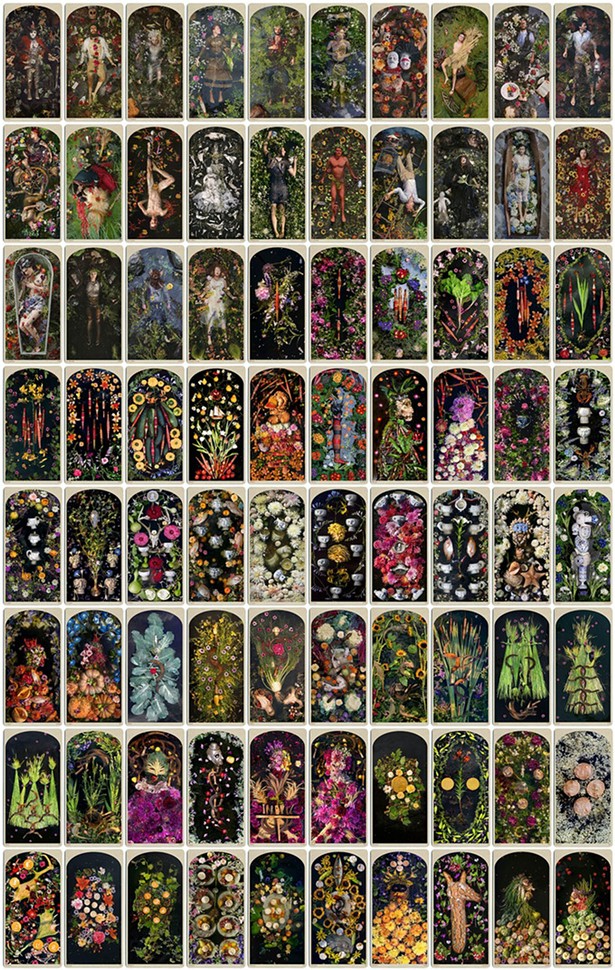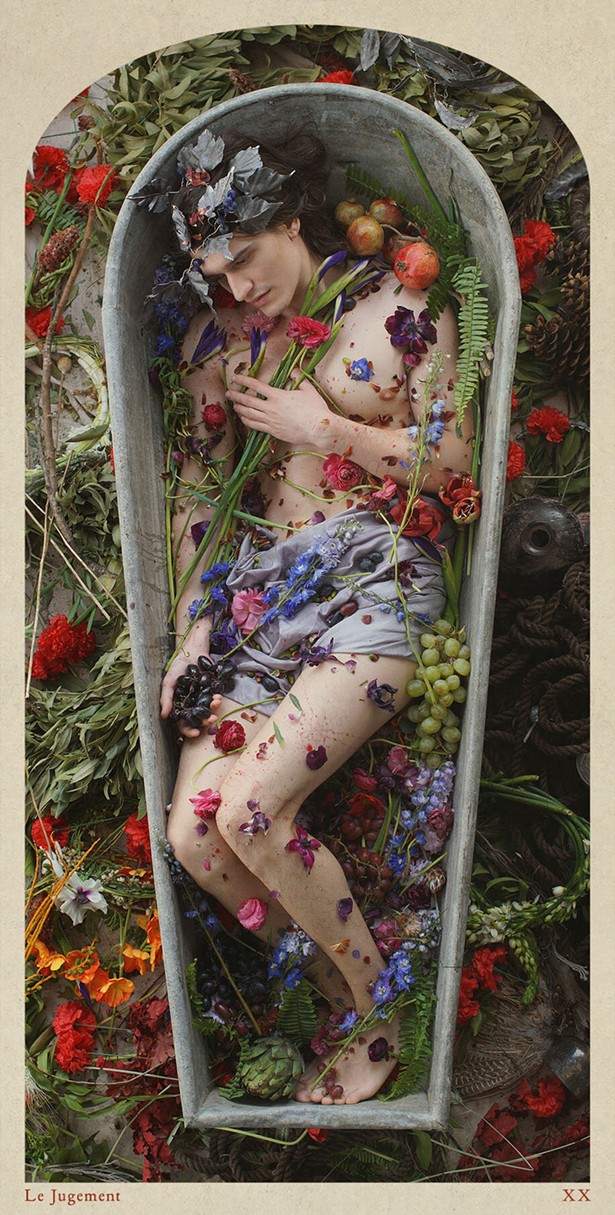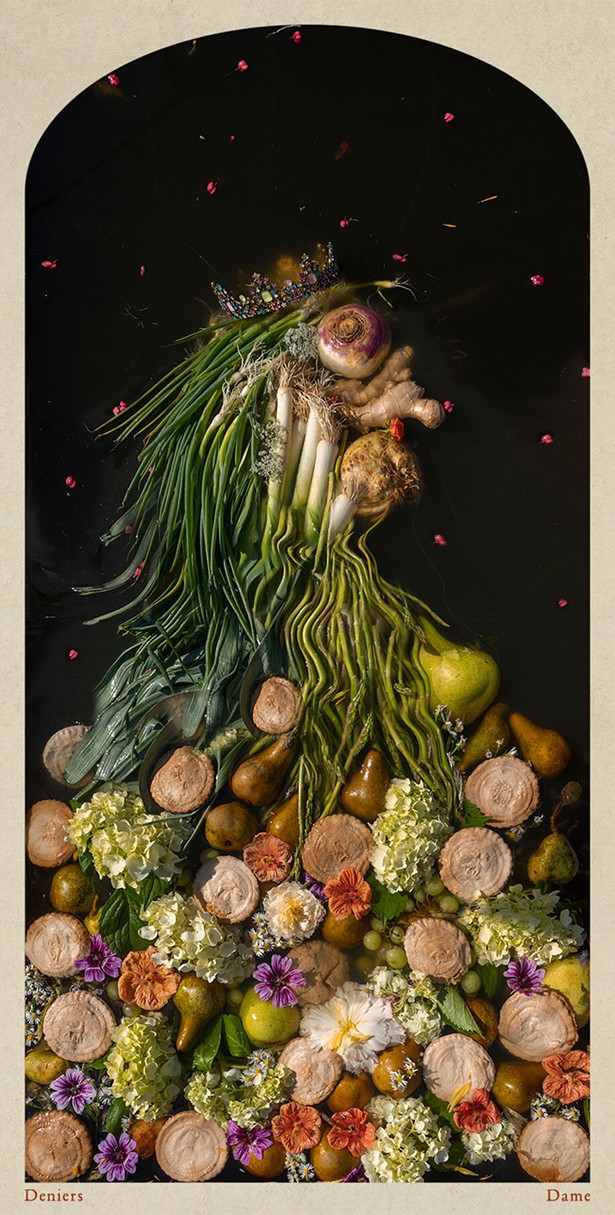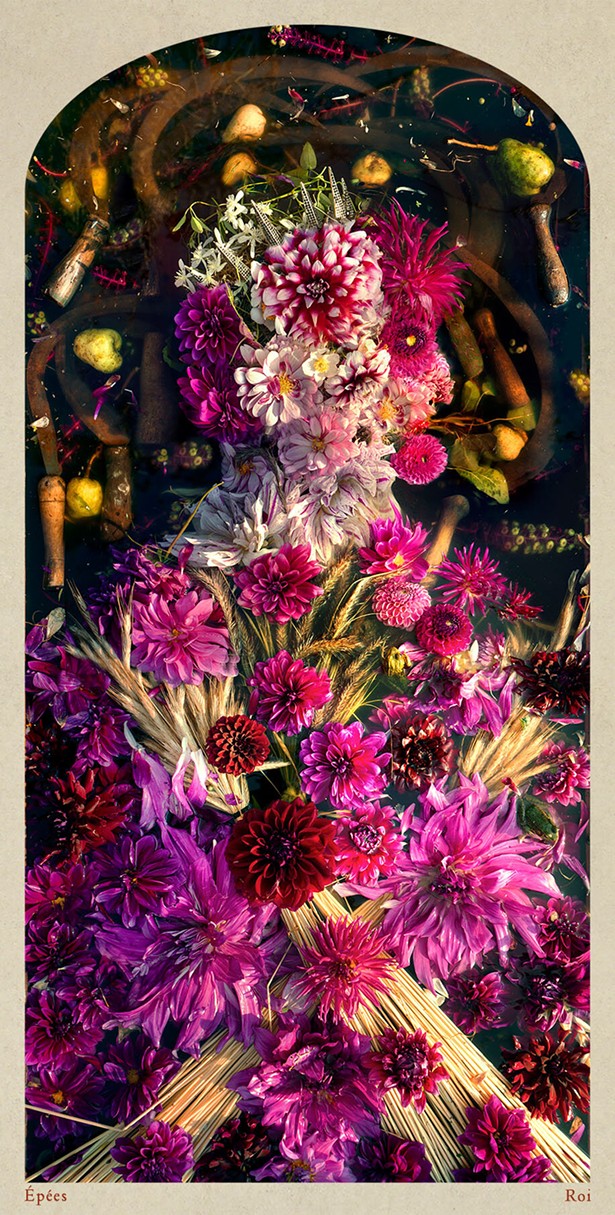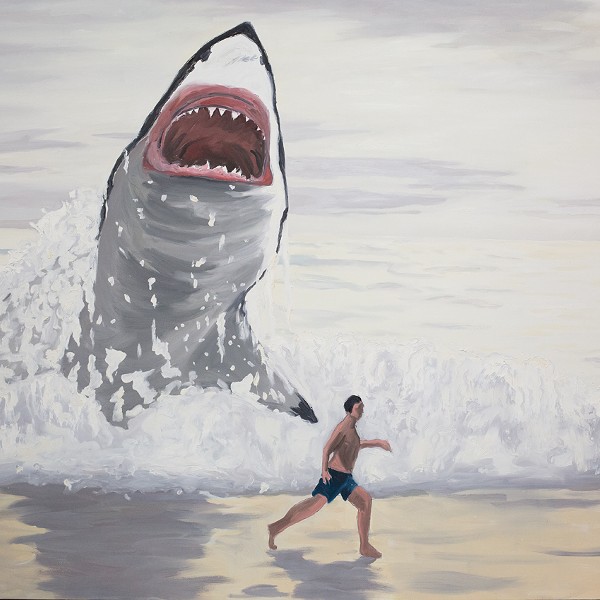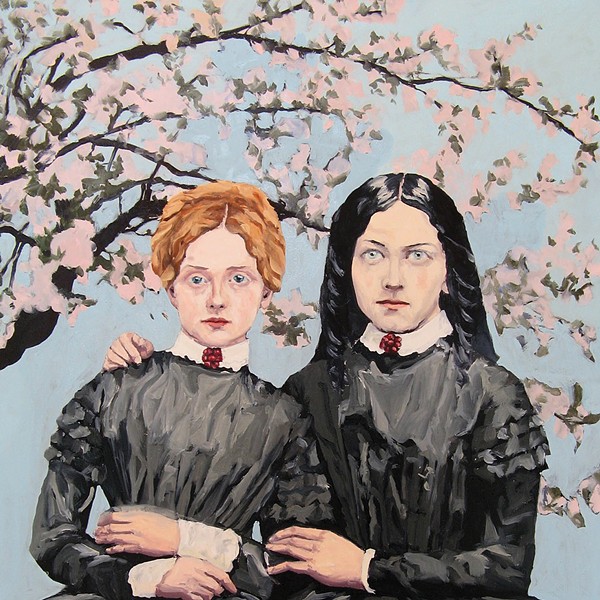Long known as a mystical resource for predicting the fate and future of spiritual truth seekers, tarot cards have played an important role in music and arts. “Let’s go upstairs and read my tarot cards,” Rod Stewart sang as a pick-up line in “Stay With Me,” his 1971 megahit with the Faces.
But tarot cards are also things of visual beauty featuring cryptic and sometimes menacing visual images that only an experienced reader truly knows how to interpret.
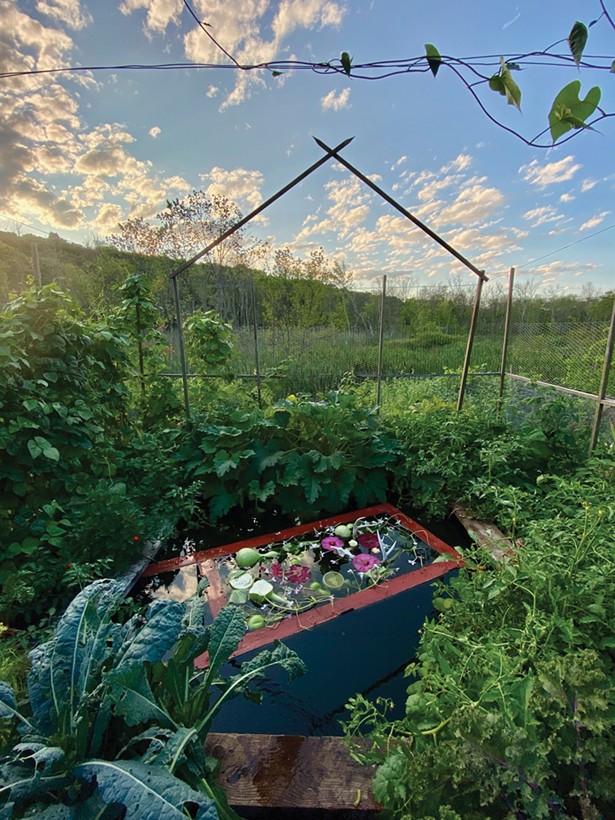
Hudson-based visual artists Nicholas Kahn and Richard Selesnick have taken tarot imagery traditionally rendered on card stock and applied the mystery and intrigue to photography with mixed media, creating their own Tarot of the Drowning World. (This is not the duo’s first tarot. In 2017, they produced the Carnival at the End of the World Tarot deck.)
After the pandemic started in March of 2020, they created a potager garden, a French kitchen garden that incorporates herbs, fruits, and vegetables with flowers and ornamentals to create a functional, aesthetically pleasing space.
“In March 2020, we had all just entered internal exile as the Plague was descending throughout the land,” Selesnick says. “There was nowhere to go but inside oneself, or set oneself the task of recalibrating the settings on the experience of time and space so that one’s immediate surroundings became a vast terrain in which to wander the whole day.”
The minor arcana (the counting cards of the four suits) photographs were shot largely within a central square basin in the garden. “Over the course of the summer, the fruits, vegetables, flowers, and leaves grown in the potager became the stars of the photos, along with Bulgarian wheat sickles, press-molded biscuits, antique chapati rolling pins, and Delftware figurative blue-and-white goblets created for the project,” he says. “These last were used to represent the classic suits of swords, coins, wands, and cups.”
Most of the major arcana (images with floating figures) were shot in the marshes of Columbia and Dutchess counties, some directly behind Kahn’s house in Ghent.
An invisible netting supported the items that didn’t float and arranged wild flowers gathered for specific meanings were used to create each card in the deck. They suspended a camera on a long pole over the set, usually using a remote viewfinder to see and shoot at the right moments. Very little Photoshop was used.
“We created these photos by changing perspective and floating the camera directly overhead about a body of water, the god’s-eye view of a world where water is rising up, infiltrating, and flooding, creating this netherworld dream space for us to see our future selves in,” Selesnick says.
“Pretty much what you see in the images is a result of working with and fighting the elements of chaos and order in arranging the objects and flowers and costumed characters in the ever-flowing, uncontrollable water,” he adds.
Running throughout these works is a harvest theme that follows the seasons from early spring until late fall with growth, death and rebirth. By combining the natural, organic elements of potage gardening with the modern technology of photography, Kahn and Selesnick capture and create a magical new tarot all their own.







